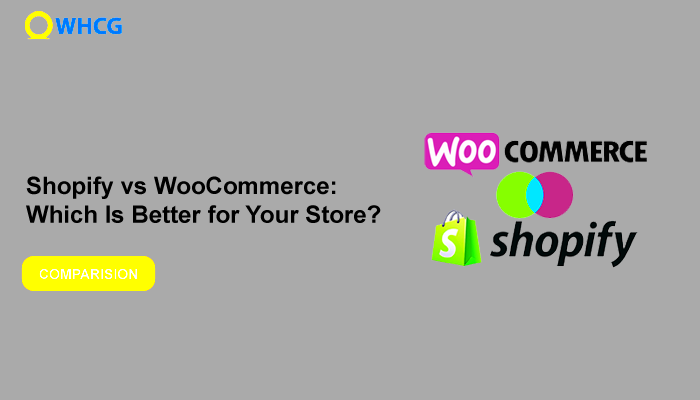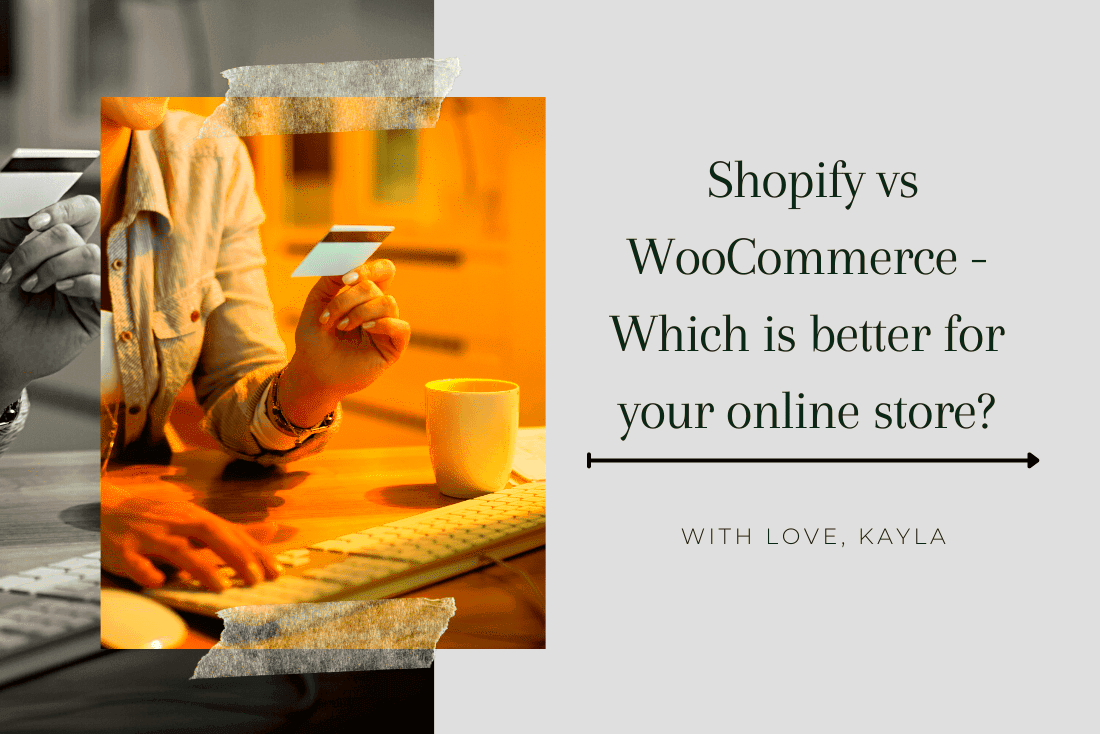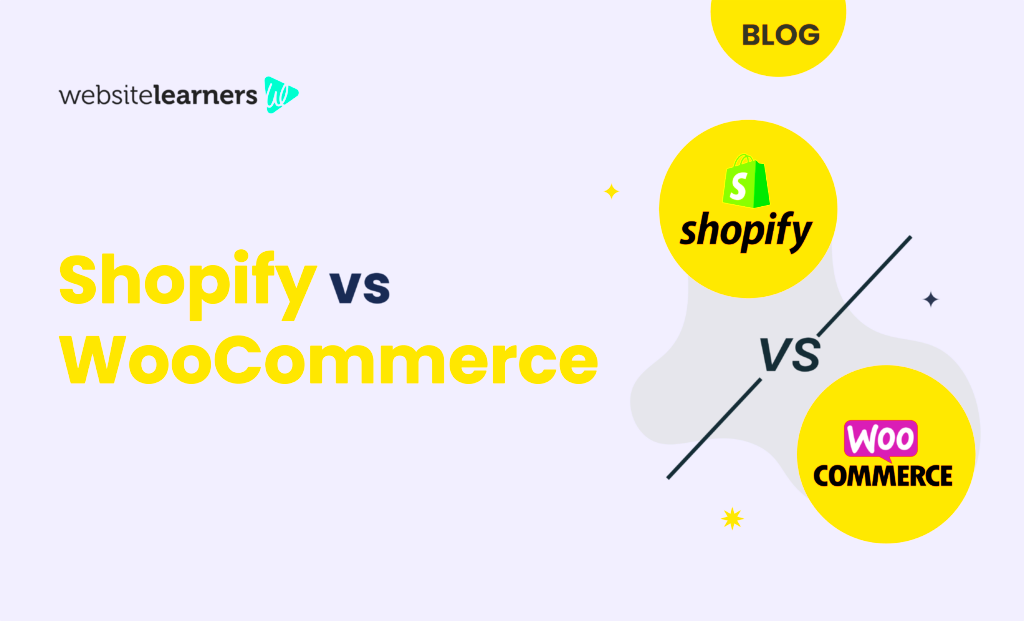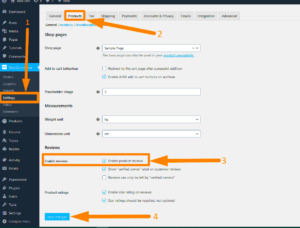If you’re diving into the world of e-commerce, you’ve likely come across two of the most popular platforms: WooCommerce and Shopify. Each has its own unique features, strengths, and weaknesses, making the decision a bit tricky. Whether you’re a seasoned retailer or a fresh entrepreneur, choosing the right platform can set the tone for the success of your online store. Let’s break it down and explore what each one has to offer!
Overview of WooCommerce

WooCommerce is a powerful, customizable e-commerce plugin for WordPress, designed to help users turn their WordPress sites into fully functional online stores. It has gained immense popularity, powering over 28% of all online stores. Here are some key features and characteristics that make WooCommerce stand out:
- Open Source: Being an open-source platform means you can tweak and customize it as per your needs. This flexibility allows store owners to create a unique shopping experience.
- Cost-Effective: WooCommerce itself is free to install. However, costs can accrue through premium themes, plugins, and hosting, which gives you control over your budget.
- Integration with WordPress: If you’re familiar with WordPress, getting started with WooCommerce is a breeze. The platform integrates seamlessly, allowing you to leverage existing functionality.
- Wide Range of Extensions: From payment processors to shipping calculators, WooCommerce boasts a vast library of plugins and extensions to enhance your store’s functionality.
- SEO Friendly: Built on WordPress, WooCommerce inherits many excellent SEO practices, helping your store attract organic traffic.
However, it’s worth noting that WooCommerce does require a bit more technical know-how to manage compared to more straightforward platforms like Shopify. Whether you’re an experienced developer or just starting, WooCommerce can be a great fit if you’re looking for customization and control!
Overview of Shopify

Shopify is a leading e-commerce platform designed to provide entrepreneurs and businesses with an easy way to set up and manage their online stores. Founded in 2006, Shopify has grown significantly and now powers over one million businesses globally. Its user-friendly interface and comprehensive tools make it an attractive option for those looking to sell products online.
One of the standout features of Shopify is its flexibility. Whether you are a small business owner or a large enterprise, you can tailor your store to meet your specific needs. With a range of customizable templates and themes, Shopify allows you to create a professional-looking store without needing extensive web development skills.
In terms of payment options, Shopify supports over 100 different payment gateways, enabling you to cater to a wide audience. Additionally, its built-in SEO features help improve your store’s visibility on search engines, driving more traffic to your site.
Moreover, Shopify offers mobile-friendly solutions to ensure that your store looks great and functions smoothly on any device. Their dedicated customer support team is also a plus, providing assistance through various channels when you need it most.
With plans starting from relatively low monthly fees, Shopify has made e-commerce accessible to many. From processing transactions to managing inventory and shipping logistics, Shopify simplifies the complexities of running an online store.
Key Features Comparison

When comparing WooCommerce and Shopify, examining their key features can help you decide which platform is a better fit for your business. Let’s break down some critical aspects:
| Feature | WooCommerce | Shopify |
|---|---|---|
| Ease of Use | Requires WordPress knowledge; can be complex for beginners. | User-friendly interface; designed for all skill levels. |
| Customization | Highly customizable through plugins and themes. | Limited customization but offers beautiful themes. |
| Payment Options | Flexibility with various payment gateways, but may require setup. | Supports over 100 payment gateways and easy integration. |
| Costs | Open-source; costs can vary based on hosting and plugins. | Fixed monthly fees based on the plan with potential transaction fees. |
| SEO Capabilities | Robust SEO tools; highly customizable. | Built-in SEO features but less customizable than WooCommerce. |
In conclusion, both platforms have their strengths and weaknesses. WooCommerce is ideal for those who enjoy flexibility and have the technical skills to manage a more complex setup. On the other hand, Shopify is perfect for those looking for a simple, all-in-one solution to get their online store up and running quickly and efficiently.
5. Pricing and Costs
When it comes to running an online store, understanding the pricing and costs of different platforms is crucial. Both WooCommerce and Shopify have their unique pricing structures, which can impact your decision significantly. Let’s break it down!
WooCommerce: Since WooCommerce is an open-source plugin for WordPress, it’s technically free to download and use. However, being “free” doesn’t tell the whole story. To fully utilize WooCommerce, you’ll need:
- A WordPress hosting plan, which can range from $5 to $50 per month depending on the features you choose.
- A domain name, usually costing around $10 to $15 per year.
- Premium themes and plugins, which can add anywhere from $50 to several hundred dollars annually, depending on your requirements.
Additionally, don’t forget about transaction fees if you’re not using WooCommerce Payments, which can amount to 2.9% + 30¢ per transaction with other payment gateways. Overall, while the initial costs can be lower, the expenses can pile up as your store scales.
Shopify: Shopify operates on a subscription model with plans starting at $29/month for the Basic plan. Here’s a quick rundown of the main pricing tiers:
| Plan | Monthly Cost |
|---|---|
| Basic Shopify | $29 |
| Shopify | $79 |
| Advanced Shopify | $299 |
Each plan comes with varying features, including advanced reporting and shipping discounts. Moreover, keep in mind that Shopify charges transaction fees unless you use their payment processor, Shopify Payments. This could also add up depending on your sales volume.
In summary, if you prefer a more customized solution without upfront costs, WooCommerce might be the way to go. But if you want an all-in-one package with predictable monthly payments, Shopify offers a clear pricing structure.
6. Ease of Use and Setup
One of the major factors when choosing between WooCommerce and Shopify is how easy each platform is to use and set up. Time is money, and you don’t want to spend weeks fumbling with your online store instead of focusing on sales!
WooCommerce: Setting up WooCommerce can be a bit tricky, especially if you’re not familiar with WordPress. The installation involves several steps:
- Choosing a WordPress hosting provider and installing WordPress.
- Downloading and installing the WooCommerce plugin.
- Setting up your store, which includes adding products, configuring payment options, and customizing your theme.
While WooCommerce provides extensive documentation and community support, beginners might find themselves overwhelmed by the sheer number of options available. Additionally, managing updates for your plugins and securing your site can require some technical knowledge.
Shopify: On the flip side, Shopify shines when it comes to ease of use. Its user-friendly interface makes it easy to set up your store in just a matter of hours. Here’s what you can expect:
- Sign up for an account, choosing a plan.
- Select a theme from their free and premium options.
- Add products with simple step-by-step guidance.
The dashboard is intuitive, allowing you to manage orders, inventory, and shipping easily. You won’t have to worry about security or hosting, as Shopify takes care of everything for you. Essentially, you can focus on growing your business without getting bogged down by technical details.
In conclusion, if you’re highly tech-savvy and enjoy customizing every little detail, WooCommerce might satisfy your needs. However, if you want a platform that makes it easy to get started with minimal fuss, Shopify might be the better choice for you.
Customization and Flexibility
When it comes to setting up your online store, customization and flexibility are paramount. Both WooCommerce and Shopify have their own unique advantages, but they appeal to different types of users based on their specific needs.
WooCommerce, an open-source plugin for WordPress, excels in customization. Since these platforms are built on WordPress, users are afforded unparalleled control over their store’s design and functionality. You can:
- Choose from thousands of themes, both free and paid.
- Utilize an expansive library of plugins to add functionalities, from SEO tools to advanced analytics.
- Modify the underlying code (if you’re tech-savvy) to create a truly unique shopping experience.
This level of customization, however, does require some technical knowledge. If you’re someone who enjoys tinkering or has web development skills, WooCommerce grants you the freedom to create a store that stands out.
On the flip side, Shopify offers a more streamlined approach with built-in tools and features that make it simple for users to set up a store quickly. Shopify has a user-friendly interface featuring:
- Intuitive drag-and-drop design capabilities.
- Access to a variety of themes that can be easily customized without coding skills.
- Built-in apps to enhance your store’s capabilities with just a few clicks.
If you’re a beginner or someone looking for a quick solution without diving into the complexities, Shopify may be the better fit. Ultimately, the choice between customization and ease of use boils down to your specific business needs and personal proficiency.
Payment Gateways and Transaction Fees
When setting up an online store, understanding payment gateways and transaction fees is crucial. These factors significantly impact your overall profitability and customer experience.
Shopify provides an impressive and robust integrated payment solution called Shopify Payments, which allows you to accept credit cards directly. The main highlight here is:
- Zero transaction fees when using Shopify Payments.
- Supports a vast array of payment methods, including credit cards, PayPal, and even cryptocurrency.
- Simple, transparent pricing, which makes it easy to understand what you’re paying.
However, if you choose to use third-party payment gateways like PayPal or Stripe, Shopify does charge a transaction fee, which ranges from 0.5% to 2%, depending on your plan. Many users find that Shopify Payments simplifies things tremendously, eliminating the guesswork around fees.
On the other hand, WooCommerce is highly flexible regarding payment gateways. The platform supports countless gateways right out of the box, including:
- PayPal
- Stripe
- Square
The incredible part? There are no mandatory transaction fees imposed by WooCommerce itself. Instead, you will mainly incur the fees charged by your chosen gateway. This can potentially save you a lot of money compared to Shopify, but keep in mind that you might need to invest time in setting things up.
In conclusion, Shopify’s integrated payment system is preferable for those who value simplicity and convenience, while WooCommerce’s flexibility allows for a broader selection of gateways with no built-in transaction fees, appealing to those who prioritize customization and cost-effectiveness.
Support and Community Resources
When you’re operating an online store, having reliable support and access to community resources can make all the difference in your success. Both WooCommerce and Shopify offer extensive support systems, but they cater to different needs and user bases.
With Shopify, you can expect:
- 24/7 Support: Shopify offers round-the-clock customer service via live chat, email, and phone. This means you can get assistance no matter where you are or what time it is.
- Extensive Documentation: Their help center is stocked with guides, tutorials, and FAQs to assist you in navigating the platform.
- Community Forums: Engage with a vibrant community where you can ask questions, share experiences, and get help from fellow Shopify users.
- Advanced Training: Shopify offers webinars and workshops for those looking to enhance their e-commerce skills.
On the other hand, WooCommerce also has a wealth of resources, specifically designed for users who are familiar with WordPress. Here’s what you can find:
- Community Forums: WooCommerce benefits from the extensive WordPress community. Users can tap into forums and discussions to find answers and share advice.
- Documented Resources: WooCommerce provides well-written documentation to help users set up and manage their stores.
- Third-party Support: Since WooCommerce is an open-source platform, several third-party developers offer dedicated support services.
In summary, while Shopify provides immediate, consistent support, WooCommerce thrives on its community-driven resources. Your choice depends on how much help you foresee needing as you build and manage your store.
Scalability and Performance
When it comes to running a successful online store, scalability and performance are crucial factors to consider. They dictate how well your store can grow and handle increased traffic and sales without compromising on speed or user experience.
Shopify: This platform shines in terms of scalability. It’s built for e-commerce from the ground up and can handle high volumes of traffic effortlessly. Some key points include:
- Hosted Solution: Shopify manages all hosting-related issues, so you don’t have to worry about server maintenance or downtime.
- Unlimited Bandwidth: All plans come with unlimited bandwidth, meaning that you can accommodate as many visitors as you want without additional costs.
- Performance Optimization: Shopify is optimized for speed, ensuring quick load times that keep customers engaged and satisfied.
WooCommerce: While WooCommerce is incredibly flexible and feature-rich, it requires a bit more effort for scalability. Key considerations include:
- Self-hosted: WooCommerce is a plugin for WordPress, making it a self-hosted solution. This means you’re responsible for managing your own hosting provider to ensure good performance.
- Resource Requirements: As your store grows, you might need to upgrade your hosting plan or switch to a more robust hosting solution to handle increased demand.
- Performance Management: You’ll need to stay on top of website performance, including optimizing images and managing database size to maintain speed.
In conclusion, if you anticipate significant growth and prefer a hands-off approach to hosting, Shopify’s ease of scalability may appeal to you. However, if you’re comfortable with managing resources and seek customization, WooCommerce offers a flexible, powerful option to grow your store.
Conclusion: The Best Choice for Your Store
When deciding between WooCommerce and Shopify for your online store, it’s essential to weigh the advantages and disadvantages of each platform. Both have their strengths and cater to different types of businesses, so understanding your specific needs is crucial. Below is a summary comparison to help you in making your decision.
| Feature | WooCommerce | Shopify |
|---|---|---|
| Ease of Use | Requires some technical know-how (WordPress) | User-friendly, ideal for beginners |
| Customization | Highly customizable with plugins | Limited customization without coding |
| Pricing | Free to start but costs can add up | Monthly subscription plus transaction fees |
| Scalability | Good for larger stores, scaling may require more resources | Scalable with ease, suitable for all business sizes |
| Support | Community support and forums | 24/7 customer support |
In conclusion, the best choice for your store ultimately depends on your unique requirements. If you are looking for greater customization and are willing to manage a more complex system, then WooCommerce may be the better option. Conversely, if you seek a more user-friendly experience with robust support, Shopify would likely serve you better. Analyze your needs, budget, and long-term goals to make the most informed decision for your e-commerce venture.



